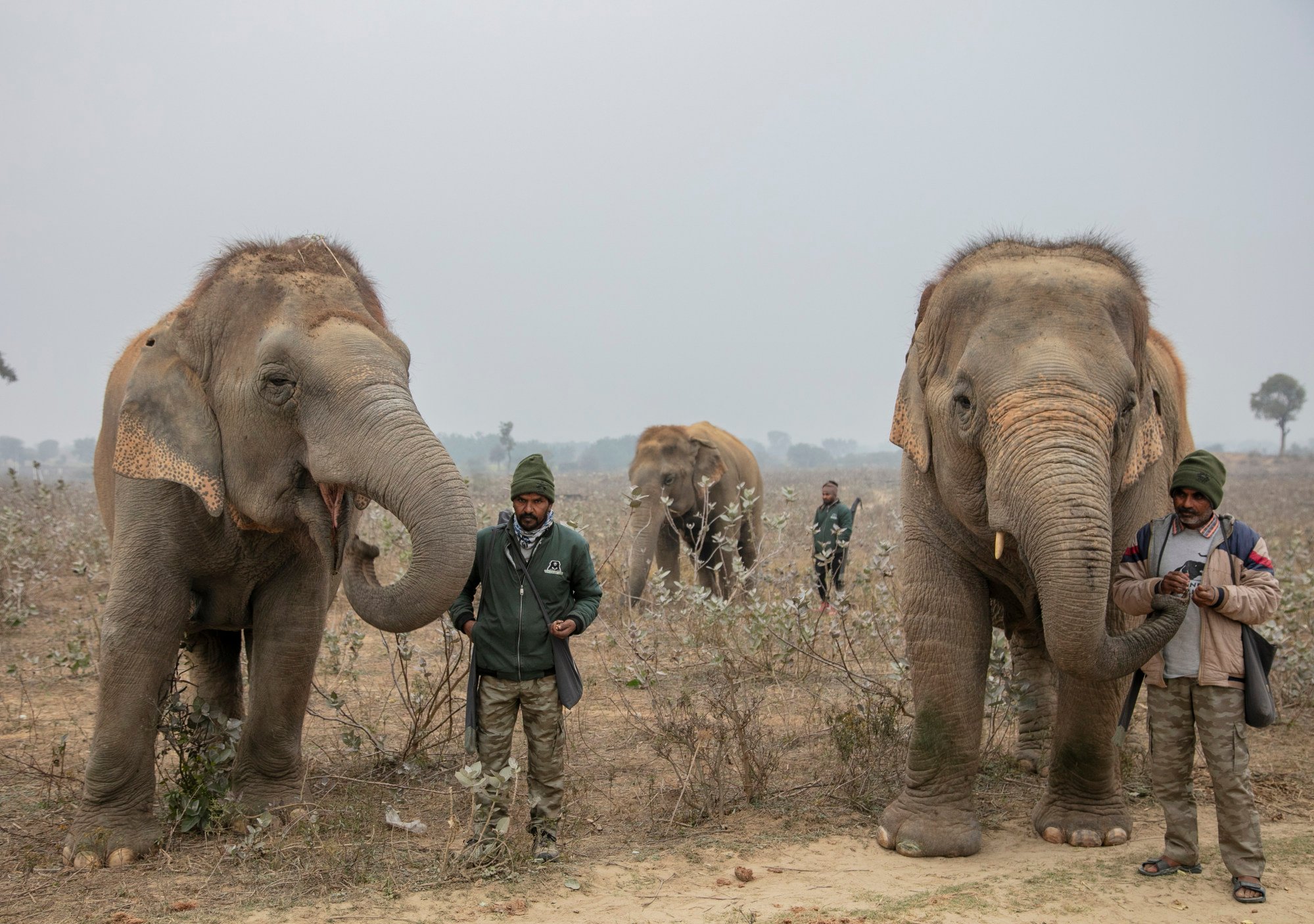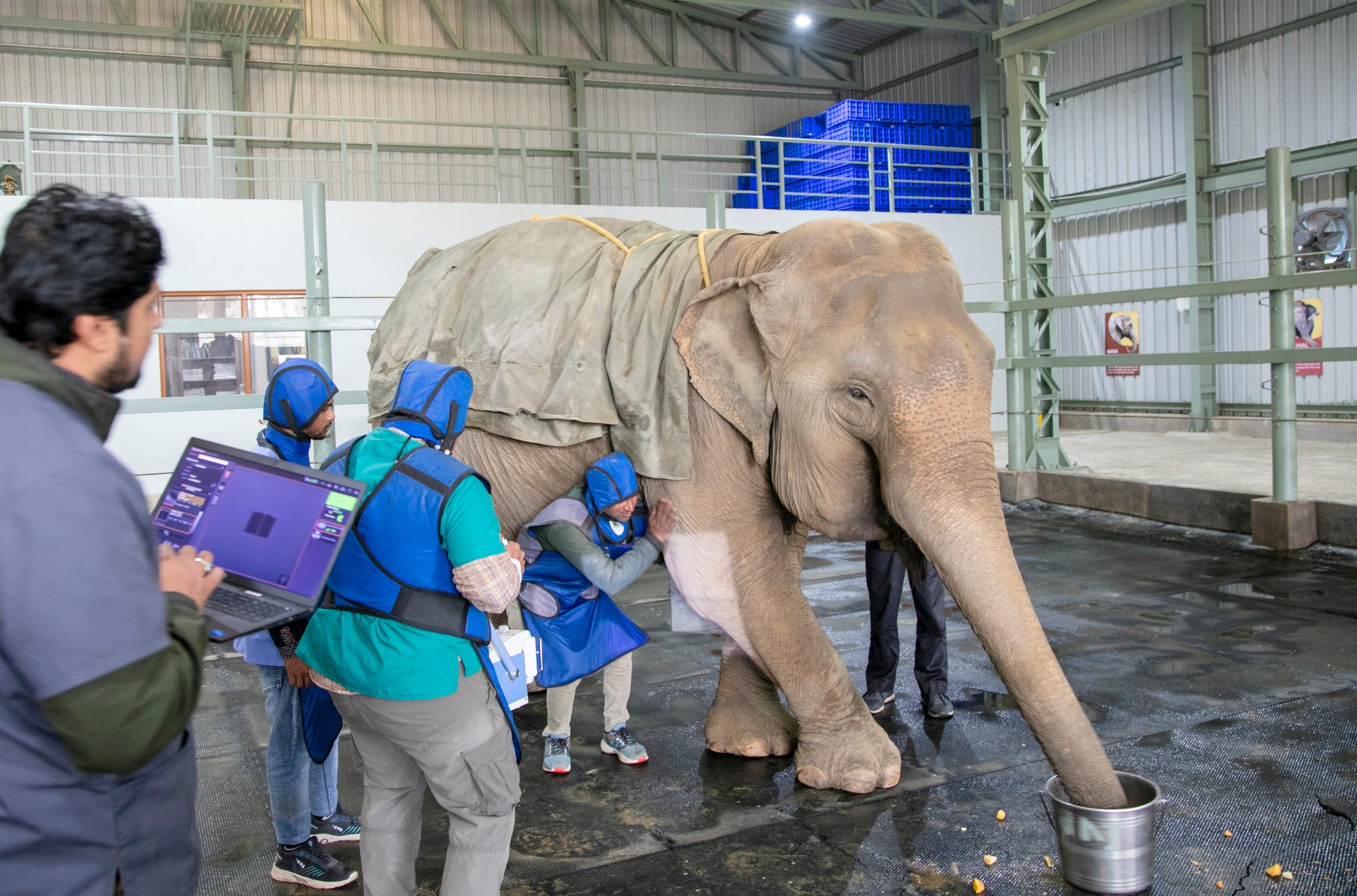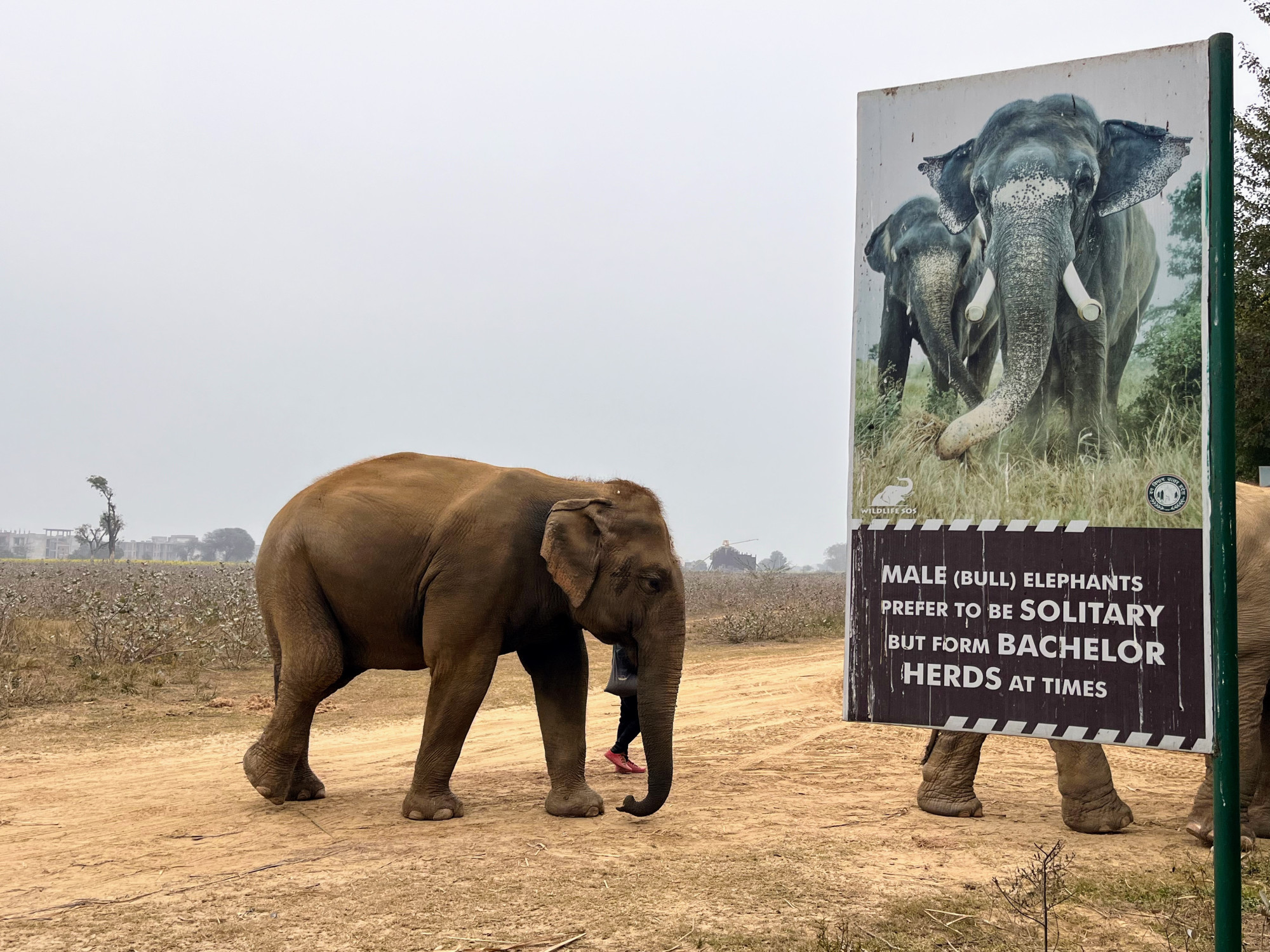Tara is one of 32 rescued elephants housed between India’s only elephant hospital, the Wildlife SOS Elephant Hospital Campus, and the nearby 20-acre Elephant Conservation and Care Centre, both on the outskirts of Mathura, a city three hours’ drive from India’s capital, New Delhi.
“Each of them has a history of abuse and captivity,” says Kartick Satyanarayan, CEO and co-founder of Wildlife SOS, a non-profit wildlife conservation group that runs the hospital. “We only have the opportunity to give them the last few years of love and affection. Once an elephant is removed from its herd and turned domestic, it cannot return to the wild.”
Tara, 25, was rescued in 2023 from a life of begging, starvation and walking countless hours on concrete roads. Dermatitis and colic disease caused her immense pain and appetite loss.
But thanks to the veterinary team’s medical care, a carefully curated diet and the companionship of Taj, another resident elephant, Tara has shown great improvement.
Stop ‘selfish selfies’: wildlife charity denounces cruel animal photo trade
Stop ‘selfish selfies’: wildlife charity denounces cruel animal photo trade
Wildlife SOS was started in 1995, and its rescue and conservation work includes bears, tigers and leopards.
While hospital visits are limited to professional vets and forest department officials, visitors can take 90-minute educational tours at the elephant centre or volunteer on a working holiday, where they help with daily tasks and learn about the animals, the rehabilitation of their former owners, and the group’s #RefuseToRide campaign.
“People are incredibly moved by their visit, unaware of this abuse and vowing to never ride an elephant, or participate in creating this problem,” Satyanarayan says.

Elephants are exploited for entertainment, weddings, begging and religious purposes across India. But many people are unaware of the cruel domestication process, including phajaan – a torture used on baby elephants to break their spirit and force them into submission.
Over time, heavy loads, walking on hot sealed roads, bullhook beatings and tight restraints cause problems including spinal damage, arthritis, loneliness and starvation.
Although the Indian Wildlife Protection Act 1972 prohibits the capture of wild elephants, unless they are a threat to life or property, there are an estimated 2,600 animals in captivity in India, many illegally owned. Rescue is a complex and often lengthy process.


“We cannot just seize an elephant from its owner,” says Harendra Singh, head coordinator of the visitor and volunteer programme at the Elephant Conservation and Care Centre, while showing us around its memorial garden.
“First the Forest Department checks on ownership and health certificates. If it goes into a court case with the owners, it may be a few years before the Forest Department hands the elephant over to us for permanent care.”
The garden is dotted with commemorative menhirs – tall standing stones – for the rescued elephants that have since died, including one honouring the “centre’s matriarch” Champa, the first rescue, in 2010.
“All visitors make a donation to visit, but there is no physical interaction with the animals,” Singh says. “If that’s what you want, then this is not the place for you.”

Longer-stay visitors to the centre help with various tasks, such as cleaning enclosures, preparing food and observing the elephants. Accommodation is a 10-minute drive away, at the comfortable 16-bedroom volunteer house.
As we walk around, the elephants are busy playing with “enrichments” – such as balls filled with fodder – placed around their sprawling enclosures for physical and mental stimulation.
As thick as thieves, Maya, Emma and Phoolkali are in one enclosure, the latter covered in oily patches, remnants of a warming massage.
A former circus elephant, Phoolkali was emaciated, dehydrated and blind in one eye from untreated cataracts when rescued. The trio’s healing would be considerably slower without their camaraderie.


Around the corner, 72-year-old Suzy, also a former circus elephant, is being hand fed by her caretaker, former mahout (elephant driver) Babulal.
Blind and toothless, the elephant is on a soft diet of “Suzy’s smoothies” and a delicious smelling mash of millet, brown rice, vegetables, ghee and spices.
In contrast to the elephants’ prior instruction through pain and fear, positive reinforcement methods are used here. Veterinary officer Dr E. Gochalan demonstrates target training on Laxmi.

A former begging elephant, Laxmi was 1,800kg (4,000lb) overweight due to a junk-food diet. She has since shed half that excess weight over nine years of nutritious meals.
“We tap the elephant gently with a spongy ball at the tip of a pole, a behaviour-shaping tool called ‘the target’,” Gochalan explains.
During training, the tip is touched to various parts of the pachyderm’s body while each is named, the elephant gradually understanding the connection.

Later, when the elephant performs the required action, such as raising a limb, through verbal request or by tapping the target to the body part, they are rewarded with edible treats.
This is useful in medical examinations particularly.
In each elephant field at the sanctuary there is a “protected contact wall”, with openings through which the elephant can place their limbs or ears for examination or treatment.
In anticipation of reward, Laxmi enthusiastically places her legs and ears for examination by Gochalan, without being instructed or requested.


While the elephants’ tragic stories and visible scars make for a sobering visit, there is also great joy to be found at the centre.
In the relaxed environs, the elephants display a sense of liberation, dignity and security. It is special to walk alongside them on their evening stroll as they playfully shower their backs with trunkfuls of mud, graze, and amble in little groups like gossipy friends.
“These elephants are now fulfilling the role of educating and inspiring people to prevent this from happening to others,” Satyanarayan says.







